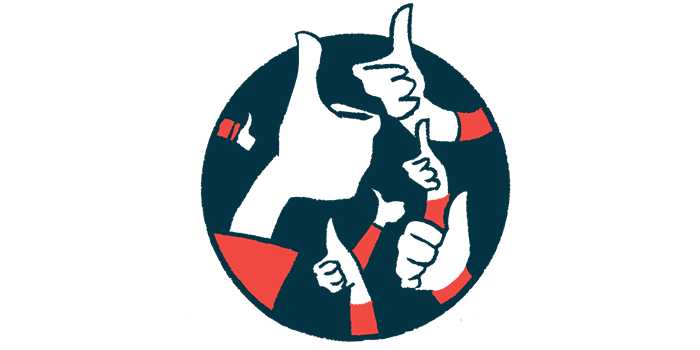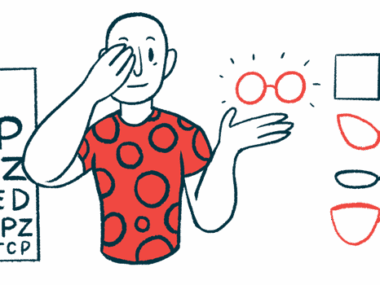FDA approves Phase 3 trial design to test Batten-1 for juvenile Batten
If findings are positive, Phase 3 trial would be sufficient to secure FDA approval
Written by |

The U.S. Food and Drug Administration (FDA) has cleared the design of a pivotal Phase 3 trial to test Theranexus’ investigational therapy Batten-1 in children and adolescents with juvenile Batten disease.
This was the result of a mid-April meeting between the FDA’s Division of Rare Diseases and Medical Genetics, Theranexus, and the Beyond Batten Disease Foundation (BBDF), which is also involved in the therapy’s clinical development.
The FDA division also confirmed that should the findings be positive, the Phase 3 trial would be sufficient to secure Batten-1’s approval in the U.S. Theranexus expects to use the trial findings to support regulatory approval in Europe.
Trial will run at sites globally with enrollment to begin by year’s end
The trial will run at international sites including in the U.S. and Europe, and enrollment is expected to begin by year’s end.
The meeting was held after the release of positive interim safety findings from an ongoing Phase 1/2 clinical trial (NCT05174039) testing Batten-1 in adolescents and adults with juvenile Batten.
“We are absolutely delighted to have had such a constructive and productive meeting with the FDA enabling us to initiate the Phase [3] clinical trial for Batten-1 in the near future,” Craig Benson, chair of BBDF, said in a joint press release.
“Patients and their families are eagerly awaiting the launch of enrollment for this trial in a disease for which there is currently no available treatment,” Benson added. “This trial is a source of tremendous hope for them.”
Also called CLN3 disease, juvenile Batten is caused by mutations in the CLN3 gene, leading to the accumulation of a cellular waste product called lipofuscin inside lysosomes, the cell’s recycling centers. Nerve cells are particularly susceptible to damage from this toxic buildup, which result in symptoms such as visual, motor, and cognitive declines.
Batten-1’s active ingredient is miglustat, a molecule that works to prevent the accumulation of waste molecules within cells, in addition to reducing neuroinflammation.
Miglustat is approved under the brand name Zavesca for treating type 1 Gaucher disease, another condition characterized by the toxic buildup of cellular waste products in lysosomes.
Patients and their families are eagerly awaiting the launch of enrollment for this trial in a disease for which there is currently no available treatment. This trial is a source of tremendous hope for them.
Ongoing Phase 1/2 trial indicates Batten-1 is generally safe
A BBDF-sponsored Phase 1/2 trial is currently assessing the safety, tolerability, and pharmacological properties of increasing doses of Batten-1 in six juvenile Batten patients, 17 and older. Participants are receiving oral capsules of Batten-1, up to a maximum daily dose of 600 mg, for two years.
Interim data after more than two months of treatment indicated that Batten-1 was associated with a favorable safety and pharmacological profile. The most commonly reported side effects were mild-to-moderate gastrointestinal problems.
As that trial continues, Theranexus and the BBDF are planning the launch of the upcoming Phase 3 trial.
The study will aim to enroll about 60 juvenile Batten patients, ages 4-16, who will be randomly assigned to receive either Batten-1 at a dose of 15 mg/kg and up to 600 mg total per day or a placebo, for two years. Instead of oral capsules, Batten-1 and the placebo will be administered as a liquid solution that’s better suited for children.
Treatment groups will have comparable numbers of patients from three age groups: 4-8 years, 9-12 years, and 13-16 years.
The study’s main goal will be to assess changes in visual acuity, measured quantitatively via standard eye charts using letters where possible, or qualitatively for severely impaired patients.
Trial will also evaluate changes in cognitive function, motor skills, retina health
Secondary goals will involve changes in cognitive function, motor skills, and health of the retina — the eye layer that’s mostly affected by juvenile Batten — as assessed with standard measures.
Functional abilities in everyday activities and quality of life will also be evaluated.
This part of the trial will be double-blind, meaning that patients/caregivers and investigators aren’t aware of which children are receiving Batten-1 and which are receiving the placebo.
An additional group of nine patients representative of the three age groups will be enrolled in a parallel open-label arm. All will be given Batten-1, and contrary to the larger study arm, participants and investigators will be aware of what those children are receiving.
The open-label trial arm was added to allow investigators to enrich statistical analyses of the trial’s goals, particularly when compared with natural history data from untreated patients. It will also allow researchers to conduct interim biomarker and efficacy analyses every six months to get a notion of whether the therapy is resulting in positive effects.
“Our pivotal Phase [3] trial will enable us to gain approval for Batten-1, and also deliver rich news flow throughout the duration of the Phase [3] trial thanks to the parallel open-label patient [group],” said Mathieu Charvériat, PhD, CEO of Theranexus. “More generally, we have no doubt that we can deliver a therapeutic response for patients suffering from Batten disease.”







